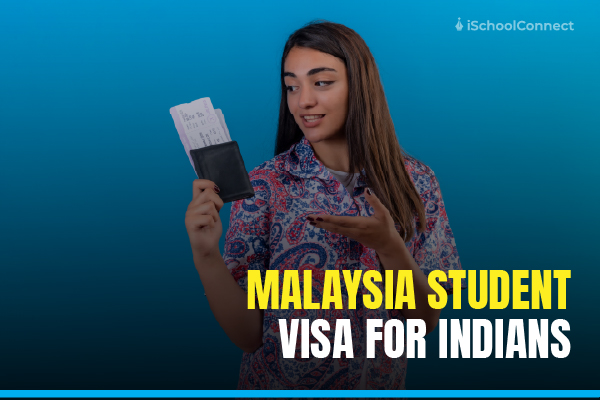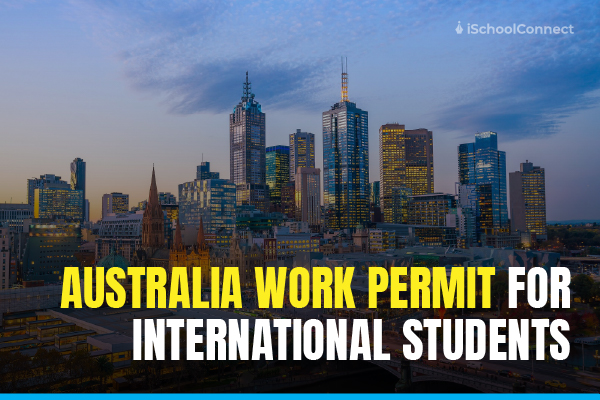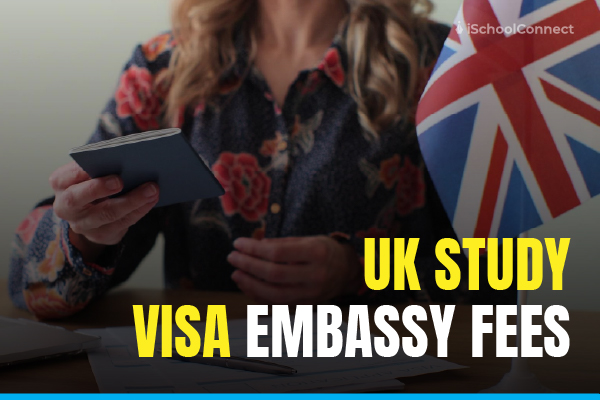Table of Contents
How does an M1 visa help?
An M1 visa allows you to enter and stay in the USA for the length of your course. You can also work part-time on your institution’s campus, obtain a driver’s license, and open a bank account. You may also bring dependents but must apply for separate M2 visas. Keep reading to learn more about M1 visa application and requirements.
Who can apply for an M1 visa?
Here’s who is eligible to apply for the M1 visa
Acceptance into a SEVP institution
The Student Exchange Visitor Program (SEVP) maintains a list of vocational and non-degree-granting institutions that accept M1 students. To be eligible for an M1 visa, you must apply and get admission to one of these institutions.
You may have a list of preferred schools you want to attend, but make sure they qualify for the M1 visa before applying. Following your acceptance, the school will enroll you in the Student and Exchange Visitor Information System (SEVIS) and issue you a Form I-20, Certificate of Eligibility for Nonimmigrant Student Status.
Possess excellent English skills
International students must have a strong command of the language. They should be able to discuss class concepts and understand lectures. To demonstrate English proficiency, take the TOEFL or IELTS.
Fund yourself for education in the USA
To obtain an M1 visa, you must confirm that you are capable of covering your expenses while studying and living in the United States. Because your I-20 form includes an estimate of your costs for one year, you should submit financial documents demonstrating that you have that amount readily available. If your dependents join you in the USA, your financial situation should be even better, indicating that you can also finance their stay.
Demonstrate strong ties to your home country
After your education, you must return to your home country. As a result, you should demonstrate strong ties with property deeds, a flat lease, a foreign address, and family ties. If you fail to provide sufficient proof, the US Embassy may reject your visa because you intend to stay in the US permanently.
Benefits of an M1 visa
Here are some benefits of an M1 visa
- You may enter the United States as a full-time vocational student.
- You are permitted to work part-time on campus. If necessary, you may also work off campus (with prior approval from the USCIS)
- While holding a valid visa, you can freely enter and exit the United States.
- You can live with your dependents as long as you keep your M1 status.
- M1 visas are quickly issued.
M1 visa requirements
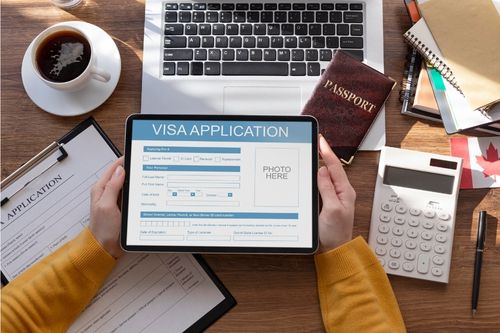
Below are the requirements for an M1 visa
- A valid passport for another six months after your visa expires.
- Your confirmation page for the DS-160.
- Your appointment letter for a visa.
- One photograph for a US Visa.
- Receipts proving payment of your fees.
- One original and one copy of your I-20 form.
- Degrees and diplomas as examples of proof of your educational qualifications.
- Transcripts.
- Test results are also necessary.
Proof of financial stability
- Bank statements for the last three years
- Tax information for the previous three years
- Loans to help you pay for your stay in the United States (if applicable).
- Please provide all pertinent information for your scholarship for education in the United States (if applicable).
- If a US citizen supports you, submit the Form I-134, Affidavit of Support, and the person’s bank and tax return details for the past three years.
M1 visa application
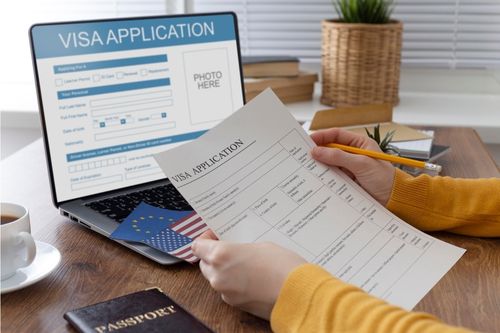
The application process for an M1 visa is very similar to that of an F-1 visa. You must take the following steps to apply for an M1 visa
- Get your I-20 form.
- Submit the DS-160 form online.
- Pay the visa application fee.
- Pay the SEVIS I-901 fee.
- Schedule your interview.
- Compile your document file.
- Attend your interview.
Get your I-20 Form
You will receive the I-20 form once the institution accepts you into the vocational school of your choice. You can start the application process with that form.
Submit the DS-160 form online
The first form you must submit online is your DS-160. Fill out the fields that pertain to your background, goals in the United States, and program of study. When you submit the form, you will receive a confirmation code and page needed for the interview and document file.
Pay the M1 visa cost for the application
The M1 visa application fee is USD 160. It is non-refundable, meaning you won’t get your money back even if you fail to receive the visa. Aside from this fee, additional fees may apply depending on the embassy you are applying to. You may also require to pay a visa issuance or reciprocity fee if you are from a specific country. Keep receipts as proof.
Pay the SEVIS I-901 fee
Because all international students in the United States are required to register in SEVIS, there is a fee that you must pay. The M1 visa SEVIS I-901 fee is $200. You should pay and keep the receipt because you will need it later.
Schedule your interview and keep documents ready
For your visa appointment, you must schedule an interview. Try to do this as soon as possible because US embassies have a heavy workload, and it may take some time for them to find you an appointment.
After scheduling the interview, you will receive your interview appointment letter, which you must attach to your documents file. You must include all necessary forms in your document file. You should bring it with you to your visa appointment.
Attend your interview
Finally, show up for your visa interview. Prepare all of your documents and be ready to answer interview questions. The M1 visa interview questions will focus on your reasons for visiting the United States, your financial situation, and your ties to your home country. If you bring dependents, such as a spouse or children, you must have proof to prove your relationship with them.
M1 visa processing time
The M1 visa processing time is relatively short. The processing takes place before your visa interview. Sometimes you receive a response immediately after your visa interview, with the interviewer congratulating you or explaining your visa denial. However, most of the time, you should expect a minimum processing time of four weeks. Stay calm if it takes longer. Most likely, the embassy was overburdened and could not respond as quickly.
How long can you stay in the USA with an M1 visa?
The length of your vocational education determines the duration of your visa. They may grant you a visa for your studies or a shorter period. Your Form I-20, on the other hand, is only valid for one year. It means you’ll have to replace it every year. You can extend the M1 visa and Form I-20 for up to three years.
You will need to apply for an extension if your visa is not valid for your studies. You can submit to USCIS Form I-539, Application to Extend or Change Nonimmigrant Status, along with your Form I-20.
Can you change your status to another US visa?
You may change your status to another non-immigrant visa. However, you cannot change your status to an F visa, and changing to an H-1B visa is difficult if you work with skills acquired while studying as an M1 student.
Many people wish to transition from an M1 visa to a green card. It can be difficult because in order to obtain an employment-based green card, you must have exceptional abilities, marry in the USA, or possess at least $500,000 to invest in the US economy. It means that only a few people progress from an M1 visa to green card.
Read more: How is Enrollment Management Changing?
Key takeaways
- The M1 visa is a visa that permits you to enter the United States to pursue vocational education courses.
- To be eligible for an M1 visa, the Student Exchange Visitor Programme (SEVP) must accept you for a non-academic course from a school on its list.
- You must change your visa status if you want to change the purpose of your visit while in the United States on an M1 student visa.
Did you find this blog helpful? Do share your views and perspectives in the comments below. Please contact us for more information on the M1 visa by clicking here. We would be happy to assist you with your queries.
Liked this blog? Read next: Denmark work visa | 7 easy steps to get one
FAQs
Q1. What if an M1 visa gets rejected?
Answer- It is final if the US consulate denies your F-1 or M-1 student visa application. There is no way to appeal. However, make sure you ask the consular officer for the specific reason for the denial. You can restart and submit a new application if you can resolve the issue.
Q2. What is the difference between M1 and F1 visas?
Answer- After completing your community vocational program, the F-1 visa allows you to transfer to a university. An M-1 visa will enable you to attend a vocational program for one year before returning to your home country. M-1 students are not permitted to continue their education at the university level.
Q3. Can you work with an M1 visa?
Answer- Students on an M1 visa may work in the United States as part of their practical training by obtaining an Employment Authorization Document.



